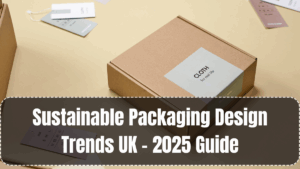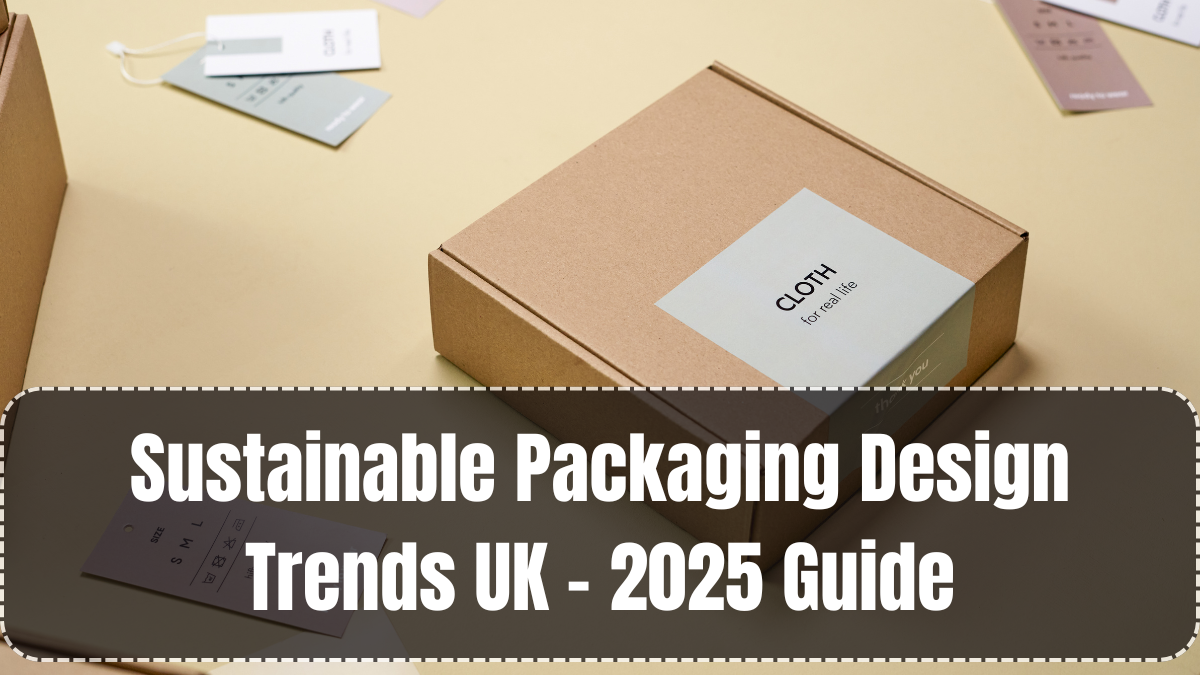As UK consumers become increasingly eco-conscious, sustainable packaging is no longer a niche trend — it’s now a standard expectation. In 2025, brands across industries from food to fashion are rethinking packaging strategies to align with the UK’s environmental goals and consumer demands. Whether you’re a startup looking to launch your first product or an established business wanting to reduce your carbon footprint, the Sustainable Packaging Design UK movement is reshaping how products are packaged, presented, and perceived.
Government regulations, retail partnerships, and global climate initiatives have pushed packaging design to the forefront of innovation. This article breaks down the key sustainable trends, materials, strategies, and real brand examples dominating the UK in 2025.

The Rise of Recyclable and Compostable Materials
One of the most significant shifts in Sustainable Packaging Design UK is the mass adoption of recyclable and compostable materials. Traditional plastic packaging has seen a steep decline due to increasing bans and consumer backlash. Instead, brands are embracing:
-
FSC-certified paper and cardboard for boxes, wraps, and sleeves
-
Cornstarch-based bioplastics that decompose within 90 days
-
Mushroom packaging made from agricultural waste and mycelium
-
PLA (Polylactic Acid) for bottles and containers in the food industry
Retailers like Tesco and Waitrose now require their suppliers to meet strict sustainability criteria for packaging, further accelerating this change across supply chains.
Minimalist Design with Maximum Impact
In 2025, less is more. Packaging aesthetics have evolved to reflect sustainability through minimalist, earthy, and clean design elements. This not only reduces printing costs and waste but also communicates a clear brand message of environmental responsibility.
Features commonly seen in today’s eco-friendly UK packaging:
-
Use of natural dyes and inks
-
Monochrome or pastel tones with recyclable matte finishes
-
Reduction in multi-layer packaging and excessive embellishments
-
Clear product labeling with eco symbols (e.g., home compostable, recyclable)
Brands like Lush and Neal’s Yard Remedies are leading examples, using zero-plastic, label-free, or reusable containers that look premium while staying green.
Smart Packaging Technology for Traceability
The integration of smart technology into sustainable packaging is a growing trend in the UK. QR codes, NFC chips, and blockchain-enabled tags are being used to:
-
Educate consumers on how to recycle properly
-
Track supply chain transparency
-
Verify authenticity of eco claims
-
Reduce waste via just-in-time production models
For instance, Pact Coffee has introduced QR codes on their compostable bags to provide full life-cycle information and return instructions. This blends technology with environmental responsibility in an engaging way.
Circular Economy Packaging Models
The circular economy has become a practical framework for packaging design in 2025. UK-based companies are investing in systems that encourage reusability and product returns. This includes:
-
Deposit return schemes (DRS) where customers return packaging for credit
-
Refill stations in supermarkets for everyday items like detergents or grains
-
Packaging that can be reused as home storage (e.g., glass jars or tins)
Retailers such as Marks & Spencer and Asda are piloting zero-waste aisles and returnable packaging programs that are influencing other players in the market.
Legal Regulations and Eco Certifications
In 2025, legal frameworks such as the UK Plastic Packaging Tax (updated in April 2025) and Extended Producer Responsibility (EPR) laws have forced businesses to reassess packaging strategies. Non-compliant brands face higher taxes, negative publicity, and penalties.
Designers must also consider certifications to build trust:
-
B Corp Certification
-
Cradle to Cradle
-
EU Ecolabel (for exports to Europe)
-
OPRL labels (On-Pack Recycling Label)
The Sustainable Packaging Design UK market now integrates compliance as part of the core design process, not just a checklist after production.
Consumer Behaviour and Eco Branding
UK consumers are driving change more than ever. Surveys conducted by WRAP UK and Mintel 2025 reveal that:
-
73% of UK consumers prefer to buy products with sustainable packaging
-
59% are willing to pay more for plastic-free alternatives
-
81% say brands should do more to reduce packaging waste
As a result, packaging is now a major branding tool, often featured in marketing campaigns and social media promotions. Brands like Faith in Nature proudly showcase their refillable bottles and packaging-free bars, winning loyal eco-conscious followers.
Cost Challenges and Innovation in Materials
While sustainable materials may still cost 10–20% more than traditional plastics, innovations are narrowing this gap. British startups and university R&D centers are creating new options like:
-
Seaweed-based films (by Notpla)
-
Algae ink printing
-
Palm leaf and sugarcane bagasse trays
These innovations make it easier for small and mid-size businesses to join the sustainability movement without sacrificing margins.
FAQs
What are the most common sustainable packaging materials used in the UK in 2025?
Popular materials include FSC-certified paper, cornstarch bioplastics, mushroom packaging, and recycled cardboard.
How are UK brands reducing packaging waste?
Brands are minimizing material use, offering refill stations, using compostable materials, and participating in circular economy schemes.
Is sustainable packaging more expensive for businesses?
Initially, yes. However, government incentives, consumer support, and long-term savings on waste make it a viable investment.
What role do UK regulations play in sustainable packaging?
Laws like the Plastic Packaging Tax and EPR regulations have pushed companies to adopt eco-friendly materials and designs.
Are consumers really influenced by sustainable packaging?
Absolutely. Over 70% of UK consumers actively choose eco-friendly packaging, making it a strong competitive advantage for brands.
Click here to know more.
